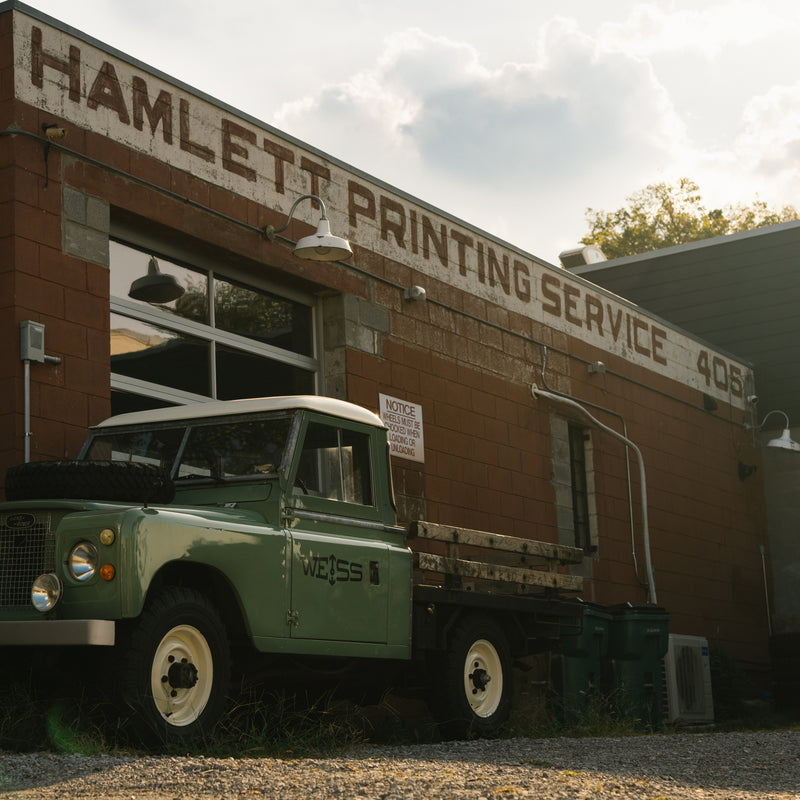In order to mark and identify parts, either with a brand name or a serial number, some form of marking is required. The most common method today is laser marking. While relatively new in terms of watchmaking, laser marking is much more efficient than traditional hand engraving. Hand engraving is an artisanal skill developed over many years and is really an art form and profession all on its own. Typically, a watchmaker would send out a part to be hand engraved, but now, with the accessibility of fiber lasers, we can perform our own laser marking right inside the watchmaker's workshop.
We no longer need to send parts all over the country or potentially to another part of the world to have them engraved. It can be done right next to the same equipment where we make the part. I use a 20W fiber laser, which is a relatively compact piece of machinery and easy to use. Although it’s not inexpensive, it is much less costly than sending parts out for laser marking elsewhere, and significantly less expensive than hand engraving.
For example, hand engraving a serial number with four digits onto the back of a stainless steel wristwatch could take hours, whereas using a fiber laser takes just a matter of seconds. These two methods—laser marking and hand engraving—are very different in terms of cost, production speed, and efficiency. Laser marking allows for a lower cost of production and faster turnaround, which are crucial when making a watch or a component within a certain budget. Lasers like these are incredibly helpful for producing relatively accessible timepieces.
A fiber laser can also be used to cut metal. For example, you could carve a logo all the way through an oscillating weight by cutting the material away. The way a fiber laser works is by eroding the material at the surface, generating heat as it does so. The longer the laser stays in one position, the more heat it creates, and the more material it cuts. By adjusting the laser’s settings, you can achieve different types of marks: dark marks that look like burns, black marks that don’t remove any metal, or frosting that creates a light-colored, clean, etched surface at any depth.
The equipment I use is from a company called MECCO, based in the United States. One reason I chose a MECCO laser is that they offer lifetime engineering assistance. If I encounter a new material or need help setting up the laser for a specific mark, I can call or email them for guidance. This support is invaluable, especially since laser settings—such as power and timing—aren’t always intuitive, and different metals react differently to the laser.
Most watches on the market today have at least one component marked with a laser. For example, some watch dials have textures added by laser, and many movement parts are decorated using lasers. Even Geneva stripes can be added using lasers instead of abrasive pads. While laser-created stripes may look slightly different, they are almost identical to traditional ones unless viewed up close by a well-trained watchmaker. Lasers significantly speed up the process, reducing the skill and time required to achieve a similar decoration.
Lasers can be integrated into CNC machines, but one important consideration when working with lasers is the frequency of the light. We use special glass to shield that light, typically within a contained system, to prevent it from escaping and potentially damaging people's eyes. Outside of that, a fiber laser is excellent for cutting and marking metals. However, to mark wood, a different type of laser is needed, as a fiber laser would set the wood on fire. For marking wooden boxes, we use a different setup with a specialized laser.
In my workshop, we can mark titanium, stainless steel, gold, platinum, brass, carbon steel—almost any material we work with. I use the laser to mark watch bridges, main plates, logos on crowns and buckles, serial numbers on case backs, and even to cut oscillating weights into specific shapes. I’ve also used the laser to create applied numerals by cutting them out from the material.
If you take a close look at any modern wristwatch, you’ll see deep engravings or markings with sharp corners—details that couldn't possibly be made with an endmill. This is thanks to laser marking, which has become the standard way of engraving a wristwatch.
